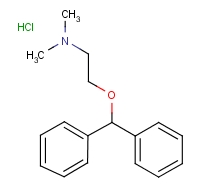Diphenhydramine Hydrochloride
Inquiry
| Post Date: | Jan 09,2018 |
| Expiry Date: | Jul 08,2018 |
| Detailed Description: |
Cas No. :147-24-0
Quantity: mass in stockKilograms Specs:white powder Price:negotiable USD Kilograms Payment Method: T/T, Western Union,Moneygram and Bitcoin. Description: Diphenhydramine is an antihistamine mainly used to treat allergies. It is also used for insomnia, symptoms of the common cold, tremor in parkinsonism, and nausea. It is used by mouth, injection into a vein, and injection into a muscle. Maximal effect is typically around two hours after a dose and effects can last for up to seven hours. Common side effects include sleepiness, poor coordination, and an upset stomach. Its use is not recommended in babies. There is no clear risk of harm when used during pregnancy; however, use during breastfeeding is not recommended. It is a first generation H1-antihistamine and works by blocking certain effects of histamine. Diphenhydramine is also an anticholinergic. Medical uses Diphenhydramine is a first-generation antihistamine used to treat a number of conditions including allergic symptoms and itchiness, the common cold, insomnia, motion sickness, and extrapyramidal symptoms. Diphenhydramine also has local anesthetic properties, and has been used as such in people allergic to common local anesthetics such as lidocaine. Allergies Diphenhydramine is effective in treatment of allergies. As of 2007, it was the most commonly used antihistamine for acute allergic reactions in the emergency department. By injection it is often used in addition to epinephrine for anaphylaxis. Its use for this purpose had not been properly studied as of 2007. Its use is only recommended once acute symptoms have improved. Topical formulations of diphenhydramine are available, including creams, lotions, gels, and sprays. These are used to relieve itching, and have the advantage of causing fewer systemic effects (e.g., drowsiness) than oral forms. Movement disorders Diphenhydramine is used to treat Parkinson's disease-like extrapyramidal symptoms caused by antipsychotics. Sleep Because of its sedative properties, diphenhydramine is widely used in nonprescription sleep aids for insomnia. The drug is an ingredient in several products sold as sleep aids, either alone or in combination with other ingredients such as acetaminophen (paracetamol). An example of the latter is Tylenol PM. Diphenhydramine can cause minor psychological dependence.Diphenhydramine can cause sedation and has also been used as an anxiolytic. |
| CAS Registry Number: | 147-24-0 |
| Synonyms: | ;Benzhydramine hydrochloride;Dimedrolum;Benzhydramine;Diphenhydramine HCl;Diphenhydramine hydrochlorids;N-(2-Diphenylmethoxyethyl)-N,N-dimethylamine hydrochloride;2-(diphenylmethoxy)-N,N-dimethylethanamine;2-(diphenylmethoxy)-N,N-dimethylethanamine hydrochloride (1:1); |
| Molecular Formula: | C17H21NO·HCl |
| Molecular Weight: | 291.82 |
| Molecular Structure: | 
|
| Hazard Symbols: |  Xn:Harmful; Xn:Harmful; |
| Risk Codes: | R22:; |
| Company: | Hengyang Desen Biotechnology Co., Ltd. [ China ] |
| Contact: | ava |
| Tel: | 86-18908446905 |
| Fax: | |
| Email: | ava@ycgmp.com |
-
Disclaimer statement:The information and data included above have been realized by the enterprises and compiled by the staff, and are subject to change without notice to you. The Chemnet makes no warranties or representations whatsoever regarding the facticity, accuracy and validity of such information and data. In order to ensure your interest, we suggest you chose the products posted by our gold suppliers or VIP members.


